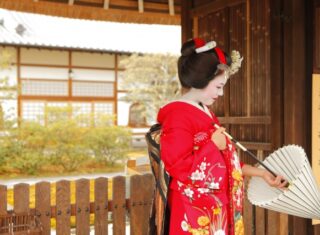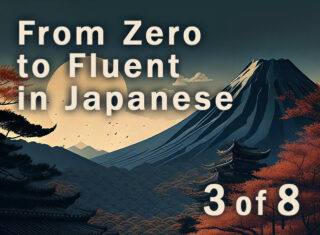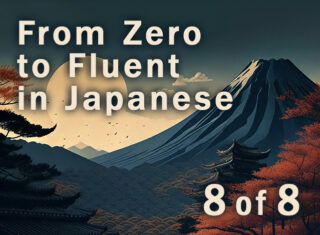- Learning Japanese
- Japanese Culture
17 Traditional Japanese Games – Dive into the Rich History of Japan’s Classic Pastimes
2025.07.21
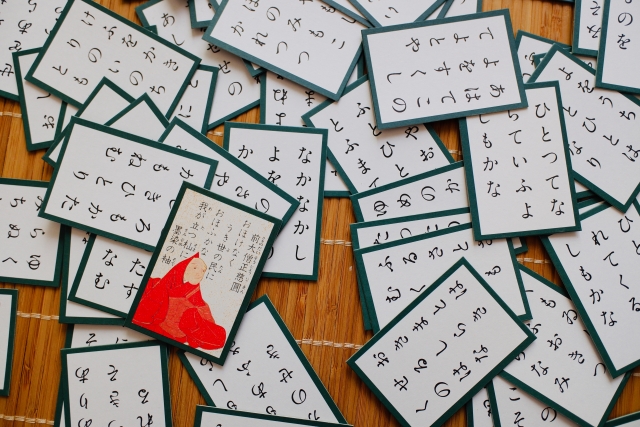
If you love Japanese culture and games, you might find yourself thinking, “I want to learn more about traditional Japanese games that have been loved since ancient times—and try playing them myself!”
From strategic games like shogi to group-friendly games like sugoroku, Japan is home to a wide range of historically rich games that are also recognized worldwide.
In this article, we’ll introduce 17 traditional Japanese games and explain what makes each of them unique and enjoyable. If you're curious about Japan’s time-honored pastimes, this list is a great place to start!
17 Traditional Japanese Games
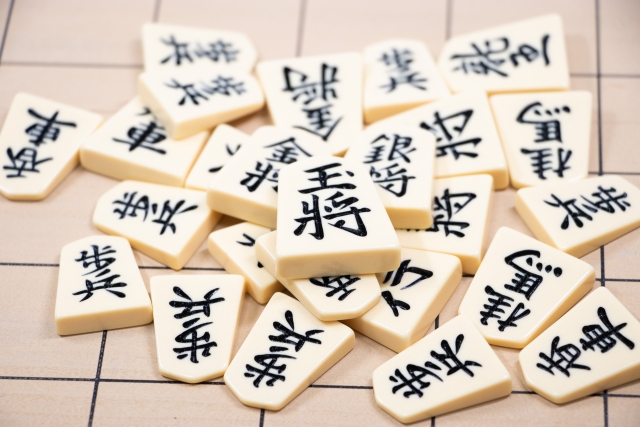
Here are 17 of Japan’s most beloved traditional games:
- Origami
- Ayatori (string figure game)
- Kendama
- Koma (spinning tops)
- Shogi (Japanese chess)
- Go (Igo)
- Hanafuda (Japanese playing cards)
- Karuta
- Menko
- Sugoroku (Japanese board game)
- Janken (rock-paper-scissors)
- Kemari (traditional football-like game)
- Takoage (kite flying)
- Daruma Otoshi (Daruma Drop Game)
- Fukuwarai (Lucky Laugh Game)
- Hanetsuki (Japanese Battledore Game)
- Kingyo Sukui (goldfish scooping)
In the following sections, we’ll introduce each of these 17 traditional Japanese games and explain what makes them so unique and enjoyable.
1. Origami
Origami is a traditional Japanese pastime in which paper is folded to create various shapes such as animals, flowers, vehicles, and buildings. Its origins are ancient, with records suggesting that by the Edo period, origami was already popular among ordinary people.
Because all you need is a sheet of paper, it has long been loved by people of all ages—from young children to the elderly. Origami has naturally become part of everyday life, from folding paper cranes to accompany gifts on celebratory occasions, to seasonal decorations displayed in homes and schools.
While it may look simple, actually folding origami requires you to think carefully about the sequence and angles of each fold, making it a mentally stimulating activity that naturally develops concentration, comprehension, and creative thinking. This is why origami has also gained attention in educational settings, rehabilitation programs, and even dementia prevention.
Additionally, when using special types of origami paper—like washi (traditional Japanese paper) or ones decorated with gold or silver foil—the results can be delicate and stunning, appreciated as works of art. The ability to display or gift your finished creation is one of origami’s most unique and heartwarming appeals, conveying both the warmth of handcrafting and the refined aesthetics of Japanese culture.
2. Ayatori (String Figures)
Ayatori is a traditional Japanese game played by looping a single piece of string around your hands and using your fingers to skillfully transform it into different shapes—such as a broom, a ladder, a star, or a bridge. While widely known in Japan, similar versions of this game exist in cultures around the world, and it has been loved for generations.
The charm of ayatori lies not only in the joy of crafting shapes by yourself but also in its versatility—two people can take turns connecting patterns, collaborating to form one continuous piece. The game offers different levels of challenge depending on age and dexterity, making it enjoyable for both children and adults.
Playing ayatori naturally develops finger dexterity and concentration, and it also nurtures logical thinking and creativity as you plan out the process of completing each form. The feeling of achievement when completing a difficult shape is particularly rewarding.
In recent years, as children spend more time with digital devices, analog games like ayatori are being re-evaluated for their value in fostering tactile awareness and imagination—making them once again a treasured part of growing up.
3. Kendama
Kendama is a traditional Japanese game played using a handheld tool consisting of a wooden handle called the “ken” (sword), which has a pointed tip and three attached cups of varying sizes, and a wooden ball (tama) with a hole, connected to the handle by a string.
Although it may appear simple, the game involves skillfully manipulating the ball to land it on one of the cups or spike it onto the pointed tip. It requires timing, concentration, and excellent hand-eye coordination, making it an ideal game for developing reflexes, balance, and focus.
There are hundreds of tricks ranging from beginner-friendly techniques to advanced combinations involving intricate movements. Competitions are held where players are judged on the beauty and difficulty of their tricks, giving kendama a sporting dimension as well.
In recent years, kendama has evolved with modern elements such as music and dance, leading to styles like kendama performance and street kendama, which are especially popular among youth in Japan and abroad. Though rooted in tradition, kendama continues to evolve and spread globally, showcasing its unique blend of cultural heritage and modern creativity.
4. Koma (Spinning Tops)
Koma (spinning tops) are one of Japan’s oldest traditional toys, believed to have been in use since around the 6th century. There are many types, from simple ones spun with the fingers to more elaborate versions that require winding a string around the body and launching it to spin using centrifugal force.
The spinning motion itself is mesmerizing—offering a sense of beauty and stability—but the way the top moves can change drastically based on how it's thrown and how much force is used. This makes it a mentally engaging toy that naturally helps build focus, dexterity, and fine motor skills through repeated play.
Koma are not just toys—they’re also crafted as regional folk art pieces using local designs and techniques, reflecting the unique culture of each region in Japan. They’re especially enjoyed during New Year’s festivities, and because the word for spinning is associated with “things going smoothly,” koma are also considered good-luck charms and popular gift items.
Even today, spinning top competitions and performances are held across Japan, and koma continues to evolve with new forms of expression. A fusion of traditional craftsmanship and playful spirit, koma remains a beloved symbol of Japanese culture that connects generations.
5. Shogi (Japanese Chess)
Shogi is a traditional Japanese strategy board game played by two people on a 9x9 grid using 40 game pieces. Believed to have originated from the Chinese game Xiangqi, shogi has undergone a unique evolution in Japan and boasts a history of over 1,000 years.
The basic rule is simple—capture your opponent’s “king” to win—but the gameplay itself is deeply strategic. Mastering the movement of each piece, predicting moves several turns ahead, and adapting your tactics to your opponent’s thinking are all part of the challenge. This mental duel, often referred to as a “battle of the minds,” has earned shogi the nickname “martial arts on the board.”
One of shogi’s defining features is the ability to reuse captured pieces, which adds a layer of complexity and excitement unmatched by most other board games. These surprise turnarounds and dramatic reversals are part of what makes shogi so captivating.
Today, shogi has gained renewed popularity thanks to televised and streamed matches, particularly those featuring young star players. It’s also being introduced in schools as a tool for fostering logical thinking, concentration, and patience.
Loved across generations, shogi is a proud symbol of Japanese intellectual culture. Regardless of age or experience, anyone can begin exploring this endlessly fascinating world.
6. Go (Igo)
Go is a traditional Japanese board game in which two players, using black and white stones, take turns placing them on a board to claim territory. Played on a grid of 19 vertical and 19 horizontal lines, the goal is to control more territory than your opponent by the end of the game.
While the rules are extremely simple—surround an area with your stones, and it becomes your territory—actual gameplay involves a staggering range of possible moves and strategic depth. Because of this, Go is often called one of the most profound games in the world.
Originally developed in China, Go was introduced to Japan where it took root during the Heian period, especially among nobles and samurai. By the Edo period, the game had become institutionalized with official Go houses known as the “Four Go Schools,” making it a well-established cultural tradition.
Today, the emergence of AI has revolutionized Go strategy, pushing the game into a new era and attracting worldwide attention. Professional matches and international tournaments are held regularly, with passionate Go communities in Japan, China, Korea, and even Western countries.
Go helps develop a wide range of skills, including intuition, logical thinking, and spatial awareness—abilities that are valuable at any age. Its meditative atmosphere and the beauty of the ever-evolving board state are what make Go a uniquely compelling and elegant game.
7. Hanafuda
Hanafuda is a traditional Japanese card game played with a unique deck of 48 cards, each beautifully illustrated with designs representing nature and the changing seasons. The cards feature imagery such as plum blossoms, cherry blossoms, autumn leaves, and chrysanthemums—each month tied to a seasonal motif—showcasing the delicate aesthetics of Japan.
Although there are several ways to play Hanafuda, the most well-known game is "Koi-Koi", a two-player format where players match cards to form point-scoring combinations. While luck plays a role, the strategic element of anticipating your opponent’s moves and carefully choosing which cards to collect makes Koi-Koi an engaging and tactical game.
The rules are relatively simple, making it accessible even for children, but the more you play, the deeper the layers of strategy and reading involved become, giving it long-lasting appeal.
Thanks to its artistic design, Hanafuda is also appreciated beyond gameplay—as an interior decoration piece or a culturally rich gift for overseas recipients. With its refined visual appeal and strong roots in Japanese tradition, Hanafuda is loved both in Japan and abroad.
The quiet, deliberate rhythm of flipping cards invites players to immerse themselves in the spirit of Japan’s four seasons and aesthetic values. Hanafuda offers more than entertainment—it’s a doorway into understanding Japanese nature and culture.
8. Karuta
Karuta is a traditional Japanese card game played using two sets of cards: “reading cards” (yomifuda) that contain written phrases or poems, and “grabbing cards” (torifuda) that display matching words or illustrations. Rich in rhythm, wordplay, and linguistic charm, karuta has long been a staple of New Year’s family gatherings in Japan.
There are several types of karuta, with the most famous being Hyakunin Isshu Karuta and Iroha Karuta.
Hyakunin Isshu Karuta is based on a classic anthology of 100 waka poems written by 100 poets. As the first half of a poem is read aloud, players must swiftly locate and grab the card that contains the poem’s second half—testing both memory and reflexes. This form of karuta has evolved into a competitive sport, complete with national tournaments and depictions in popular films, helping it gain popularity among younger generations.
Iroha Karuta, on the other hand, is a more casual variant that uses cards featuring proverbs such as “Even a dog will bump into a stick if it walks around” (similar to "accidents happen"). It’s typically played by 3 to 8 people and requires players to quickly identify the corresponding picture card when a proverb is read—a fun and fast-paced game that sharpens concentration and reflexes.
Both styles of karuta are powerful educational tools, helping players learn the nuances of Japanese language, culture, and wisdom through play. Enjoyed across generations, karuta naturally fosters language development, cultural understanding, and meaningful connection between friends and family.
★Also try reading:
14 Historic Landmarks to Visit During Your Trip to Japan
9. Menko
Menko is a traditional Japanese game where players try to flip over their opponent’s card by striking the ground with their own card to create a burst of air or shock. The cards, made of thick paper or cardboard, are typically round or square in shape.
Especially popular during the Showa era, menko was a favorite pastime among boys, often played passionately after school in parks, open spaces, or on dirt lots.
Although the rules are simple, success depends on factors such as the angle and strength of the throw, making it a game of strategy and observation, not just brute force. As players figure out “how can I flip over the opponent’s card?”, they naturally develop focus and creativity.
Menko cards were often decorated with images of anime characters, historical figures, or animals, adding a collectible appeal to the game. The thrill of winning and taking your opponent’s prized card, along with the sentimental value of one’s own favorite menko, added to the excitement and emotional investment for children.
Today, menko is often introduced as a nostalgic pastime from the past. However, its simplicity—requiring only a single card to play—and hidden depth are being rediscovered, appealing to both children and adults alike. It remains one of Japan’s proud traditional games that transcends generations.
10. Sugoroku
Sugoroku is a traditional Japanese board game in which players roll dice and move their pieces along a path of squares, racing to be the first to reach the goal.
The rules are simple: roll the dice, move your piece the corresponding number of spaces, and whoever reaches the end first wins. But what makes sugoroku exciting are the surprises that await on each square—events and instructions that add twists and turns to the game.
Examples include: “Go back 3 spaces,” “Roll again,” or “Miss a turn.” These unexpected developments inject suspense and fun, making the game enjoyable for all ages. Sugoroku has long been a favorite during family gatherings, especially around New Year’s.
Many versions of sugoroku are themed around Japanese history, folklore, or geography, making it both entertaining and educational. Modern versions, such as “The Game of Life” (Jinsei Game), explore themes like life choices and careers, offering a more contemporary twist on the classic format.
Today, sugoroku has evolved into digital games for TVs and smartphones, as well as board games featuring spinners and event cards, reaching a global audience.
Sugoroku is often regarded as a foundational Japanese game that blends play and learning, and it continues to be loved by many, even as times change.
11. Janken (Rock, Paper, Scissors)
Janken is a traditional Japanese hand game in which players use three gestures—“Guu” (fist), “Choki” (scissors), and “Paa” (open hand)—to determine a winner.
Despite its simplicity, janken is widely used for making quick and fair decisions, such as deciding the order of play or resolving minor disputes in daily life.
It is said to have originated from a Chinese hand game called ken, which was later adapted and evolved uniquely in Japan to become the form of janken we know today.
By the Meiji era, janken had spread from Japan to Western countries and is now known worldwide as “Rock, Paper, Scissors.”
What makes janken so appealing is its simplicity and fairness. Regardless of age or physical ability, anyone can enjoy the game on equal footing. Children and adults alike can instantly play together without any equipment or preparation.
In addition to being a game of chance, janken often involves elements of psychological strategy and bluffing, which can make the matches unexpectedly intense.
Another unique cultural aspect in Japan is the rhythmic chant, “Saisho wa guu, janken pon!” (Start with rock, janken pon!), which adds a fun, unifying rhythm to the game.
Beloved across generations, janken is a deeply familiar and accessible part of Japanese play culture—a game that brings people together and lightens the mood in any situation.
12. Kemari
Kemari is a traditional Japanese ball game that dates back over 1,400 years, having been introduced during the Asuka period and later gaining popularity among the nobility during the Heian and Kamakura periods.
The game is played by a group of about eight people who stand in a circle and kick a ball made of deerskin (called a mari) to each other, keeping it airborne without letting it touch the ground.
Kemari is governed by rules such as “kick with the right foot,” “don’t use your hands,” and “no scoring system.” It is not a competitive sport but rather a collaborative and graceful activity that emphasizes beauty and flow in motion.
Players work together harmoniously, respecting each other's movements and passing the ball in a fluid rhythm—more akin to a graceful dance than a physical contest. The guiding philosophy is to kick gently and play calmly, reflecting ancient Japanese aesthetics.
Kemari was once part of imperial court ceremonies and shrine rituals, also serving as a way to teach etiquette and body control. Even today, it is performed as a Shinto ritual at places like Shimogamo Shrine in Kyoto, where one can still witness its elegant display.
Interestingly, kemari is believed to be one of the precursors to modern soccer, sharing roots with ball games from other ancient cultures. Rather than emphasizing power, kemari focuses on harmony of technique and spirit, encapsulating the graceful heart of traditional Japanese sports.
13. Kite Flying (Takoage)
Takoage, or kite flying, is a traditional Japanese pastime where a kite made of paper or cloth is flown high into the sky by catching the wind and controlling it with a string.
Flying a kite involves reading the wind, adjusting the tension of the string, and skillfully maneuvering the kite through the air—a beautiful harmony between nature and craftsmanship.
In Japan, kite flying has long been associated with New Year’s festivities. It is traditionally believed to ward off evil spirits and wish for a child’s healthy growth, and in some regions, it is customary to fly a kite to celebrate the birth of a baby boy. Thus, kite flying carries with it not just fun, but deep cultural and familial significance.
The shapes and designs of kites vary across regions—from bold and heroic depictions of samurai and dragons, to comical illustrations and elegant artistic designs. In this way, kites serve as “flying works of art” that reflect local culture and aesthetic sensibilities.
Today, kite festivals and competitions are held all over Japan, where participants compete in how high they can fly their kites or how large and elaborate they can make them. Kites are also beloved abroad, serving as a fun and meaningful form of international cultural exchange.
Kite flying remains a refreshing outdoor activity that lets people connect with nature. Despite changing times, it continues to deliver joy and excitement, standing as one of Japan’s beloved traditional pastimes.
14. Daruma Otoshi (Daruma Drop Game)
Daruma Otoshi is a traditional Japanese game in which players use a small hammer to carefully knock out wooden blocks stacked beneath a daruma doll without letting the daruma fall.
Although the game appears simple, it requires great concentration, fine motor skills, and a keen sense of control—as players must carefully judge the angle, strength, and timing of each strike.
The daruma itself has long been a symbol of good luck and determination in Japan, often displayed as a talisman for success in business, family safety, and victory.
Daruma Otoshi, based on this lucky figure, has also been cherished as a New Year’s tradition and a way for families to enjoy time together while testing their luck and skill.
What makes the game exciting is the mix of tension and satisfaction—the thrill of keeping the stack balanced, and the rush of success when a block is knocked out perfectly. It appeals to players of all ages, offering both suspense and fun.
The game also features a charming aesthetic, with its wooden texture and colorful paintwork evoking a rustic and nostalgic Japanese atmosphere.
In recent years, alongside the classic wooden sets, modern versions featuring popular characters have appeared, blending traditional design with contemporary culture and giving the game new appeal.
Daruma Otoshi is a quintessential Japanese cultural game—combining fun and good fortune in a way that bridges generations.
15. Fukuwarai (Lucky Laugh Game)
Fukuwarai is a traditional Japanese New Year’s game in which players, blindfolded, try to place facial parts—such as the eyes, nose, and mouth—onto a blank face outline printed on a board.
The real fun lies in the unexpected results: placing parts while blindfolded often leads to hilariously misaligned faces, and everyone laughs together when the final result is revealed.
As its name suggests, fukuwarai (literally “lucky laugh”) is considered a symbol of joy and good fortune, making it a perfect game to bring about the first laughter of the New Year. It has long been enjoyed during family gatherings and holiday celebrations.
Since the final face always comes out differently—and often in a humorous or silly way—it naturally creates a lighthearted and joyful atmosphere, making people of all ages burst into laughter.
The game is non-competitive, so players don’t compare results or focus on winning or losing, which adds to its relaxed and inclusive appeal.
In addition, trying to place the parts in the right spot using only touch and imagination helps to nurture spatial awareness, creativity, and fine motor skills, making it educational as well.
All you need are a few cutout parts and a sheet of paper, making fukuwarai easy to set up and play—one reason it has remained a beloved classic for generations.
Today, the game has evolved beyond the traditional okame or hyottoko faces to include animals and popular characters, bringing smiles and laughter through a warm and culturally rich form of play.
16. Hanetsuki (Japanese Battledore Game)
Hanetsuki is a traditional New Year’s game in Japan, played using a wooden paddle called a hagoita, and a decorative shuttlecock made from a black seed with colorful feathers attached.
There are two main ways to enjoy hanetsuki: solo, where the goal is to see how many times you can keep the shuttlecock in the air, and two-player mode, where players bat the shuttlecock back and forth like a simplified version of badminton. Both styles can be enjoyed by people of all ages.
Hanetsuki is more than just a form of amusement—it carries the cultural meaning of “driving away evil spirits,” making it a symbolic and lucky activity during the New Year. Traditionally, it was also a way to wish for a child’s healthy development, and it’s long been common to see girls playing it as part of seasonal celebrations.
Hagoita paddles come in a wide range of designs—from elegant motifs of flowers and birds to three-dimensional images of kabuki actors or celebrities, making them not only playthings but also decorative items and popular gifts.
Today, many hagoita are made specifically for display, and events such as the Hagoita Fair in Asakusa highlight their value as traditional crafts.
As a game, hanetsuki also helps to build reflexes, focus, and balance, and is once again being appreciated for its educational and cultural value in the modern age.
17. Kingyo Sukui (Goldfish Scooping)
Kingyo sukui is a charming and nostalgic traditional Japanese game often found at summer festivals and nighttime fair stalls (ennichi). Using a delicate paper scoop called a poi, players try to gently catch goldfish swimming in a shallow pool.
The sight of children and adults in yukata (summer kimono), gathered around festival stalls under the glow of lanterns, deeply absorbed in scooping goldfish, is a quintessential summer scene in Japan.
The poi—a fragile tool made by stretching thin paper across a light frame—tears easily when soaked, requiring just the right touch, angle, and timing to succeed. The joy of this game lies in the challenge: watching the movement of water, reading the goldfish’s speed and direction, and devising a strategy to scoop one up without breaking the paper.
It may look simple at first, but in practice, kingyo sukui is surprisingly difficult, making the thrill of catching even a single goldfish all the more rewarding. It’s a game that builds concentration, observation, and dexterity, and can be enjoyed by people of all ages.
Far from being just a pastime, kingyo sukui is deeply woven into the culture of Japanese summer festivals, evoking memories, nostalgia, and the poetic essence of the season. Watching the glimmer of goldfish dance beneath the lantern light on the rippling water surface is an experience many cherish for a lifetime.
If you ever get the chance to visit Japan in the summer, don’t miss the opportunity to try kingyo sukui for yourself—you’ll likely be surprised at just how deep and delightful this simple game can be.
★Also try reading:
Introduction to Japan's Top 3 Festivals and 11 Famous Festivals Across the Country
Japanese Traditional Games – Conclusion
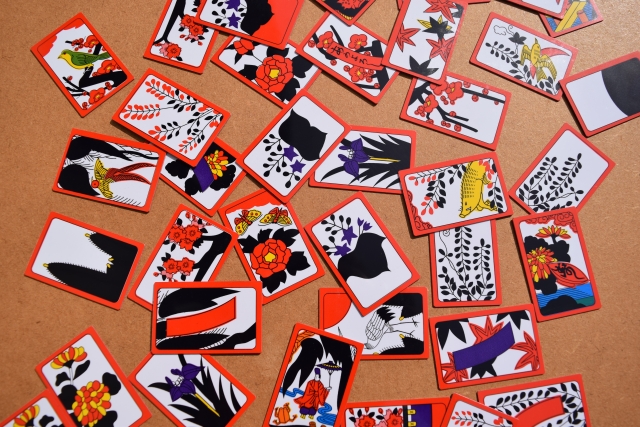
Japan is home to countless traditional games that have been passed down through generations, each one filled with unique charm and cultural significance.
Why not give one (or several!) of the 17 games introduced here a try? These playful experiences offer a chance to explore the heart of Japanese culture in a hands-on and memorable way.
And if reading this article has sparked your curiosity—if you’ve ever thought, “I want to understand Japanese culture more deeply” or “I want to seriously study the Japanese language”—then Oku Sensei’s Japanese online courses are for you.
With over 20 years of Japanese teaching experience, Oku Sensei offers personalized, compassionate guidance tailored to each student’s level and goals. Even if you’re feeling nervous or unsure about learning Japanese, she’ll help you take the first step with confidence.
✨ Right now, you can sign up for a free 30-minute consultation with Oku Sensei—
so why not take that first step today and see how OSJ can support your journey?


